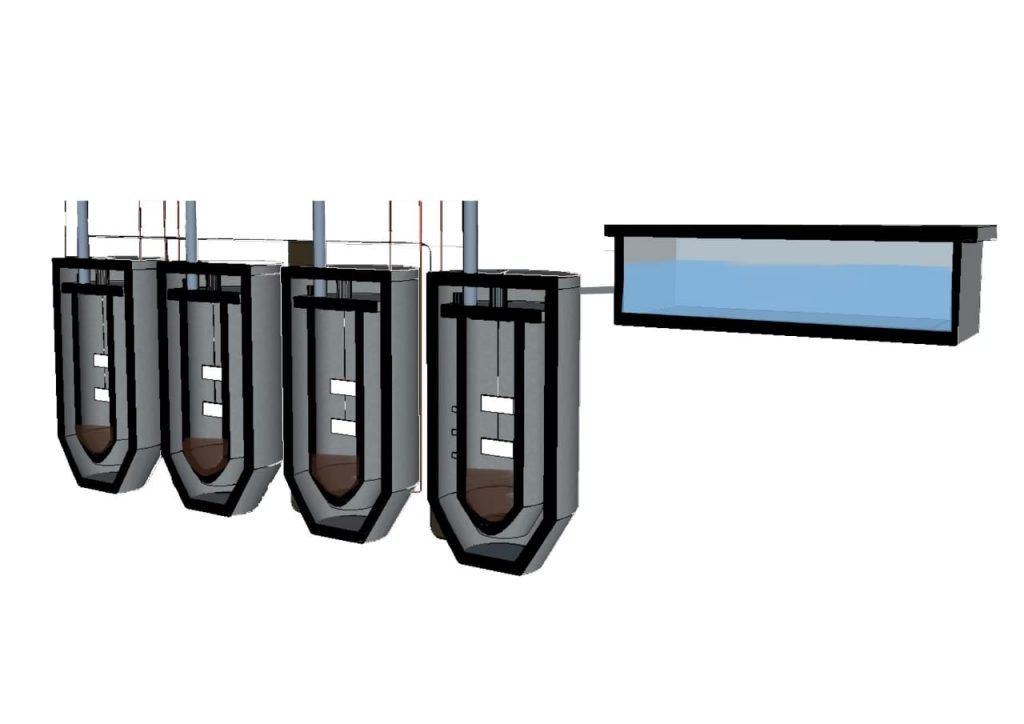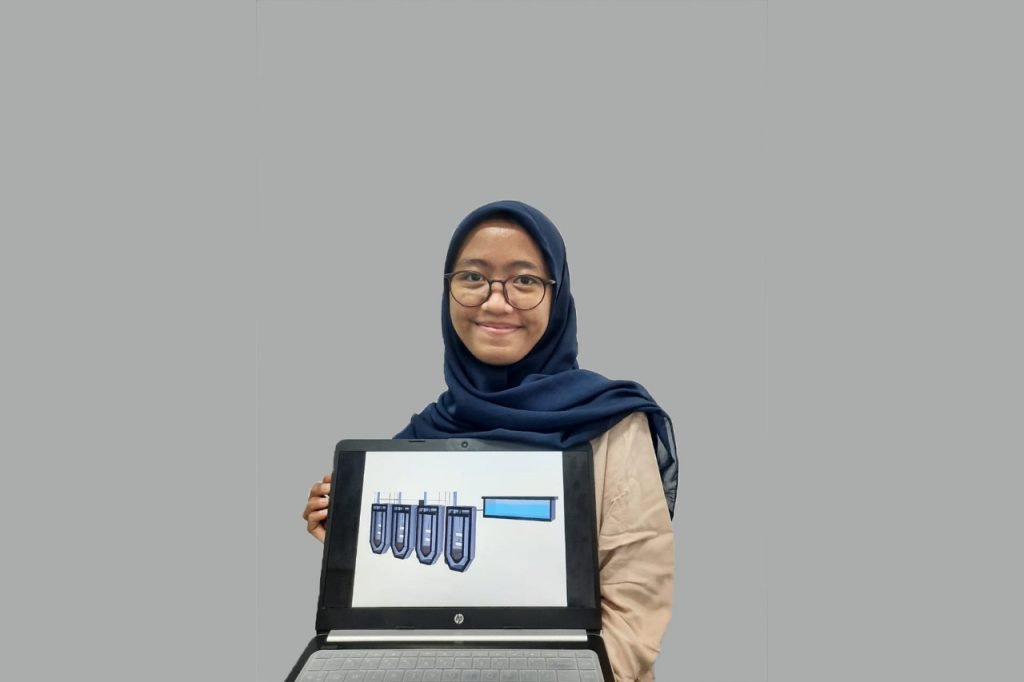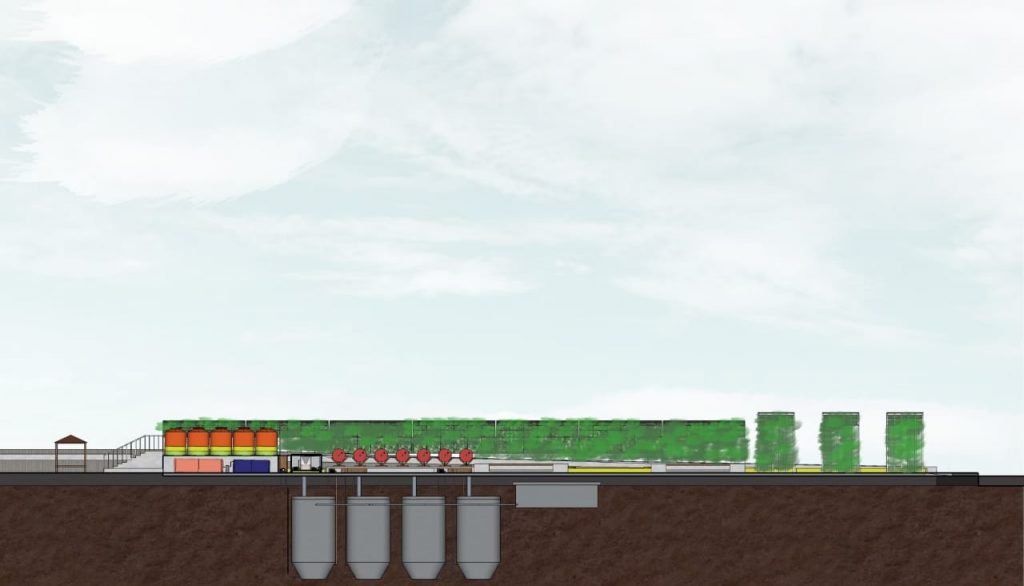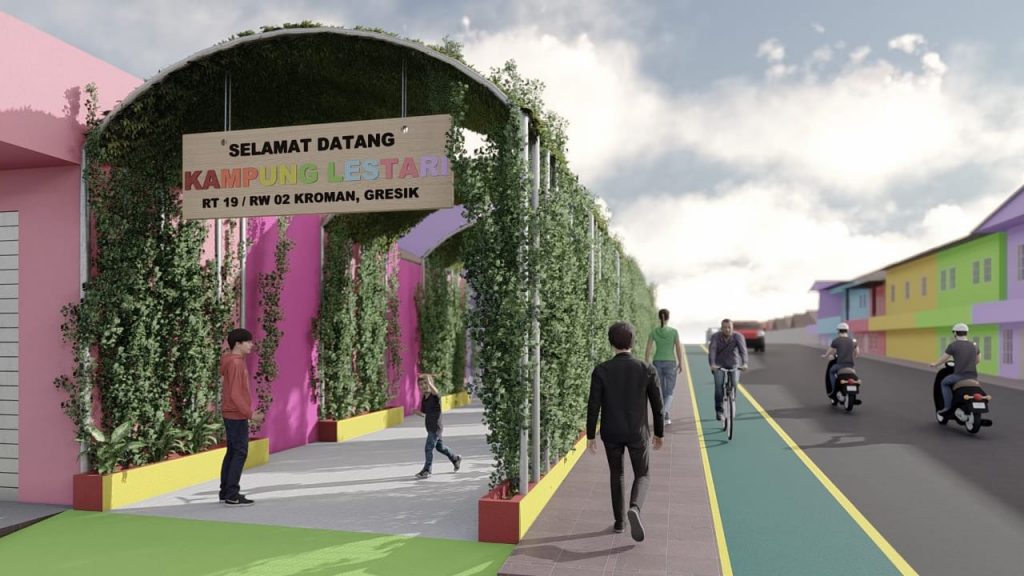ITS Student Team Design Domestic Waste Treatment without Emission
 The design of the IAASBR unit was the idea of the Grisse team from ITS
The design of the IAASBR unit was the idea of the Grisse team from ITS
ITS Campus, ITS News – Domestic waste processing in Indonesia has not been given much attention to date. Departing from this, students of the Department of Environmental Engineering, Institut Teknologi Sepuluh Nopember (ITS) designed a zero-emission domestic wastewater treatment plant (IPAL).
Not only processing waste, this IPAL which is done by a student team named Grisse also functions as a community empowerment medium at RT 19 / RW 02, Kroman, Gresik. The head of the Grisse team, Mas Den Rum, explained that the IPAL designed by his team was able to process domestic waste at the same time, both gray water and black water.
Gray water is wastewater from non-caucasian household activities such as cooking or washing. Meanwhile, black water is wastewater from latrine activities. “Usually black water is collected in a septic tank, while gray water is discharged directly into the water body,” he explained.
 ITS Grisse team leader, Mas Den Rum shows the design of the IAASBR IPAL unit
ITS Grisse team leader, Mas Den Rum shows the design of the IAASBR IPAL unit
According to Deni, his nickname, the treatment of this waste often creates problems. He gave an example, there are often septic tank leaks in black water treatment. As a result, groundwater is often contaminated by septic tank seepage. “Besides, septic tanks also cause air pollution due to methane gas produced,” he added.
Furthermore, Deni explained, the waste treatment at the IPAL designed by his team involved several stages. The first stage is to collect waste. Deni said this stage aims to mix black water and gray water and stabilize the waste discharge to the next stage. “Then the processing is continued to the Integrated Anaerobic-Aerobic Sequencing Batch Reactor (IAASBR) unit,” he explained.
As the name implies, Deni revealed that in this unit there are aerobic and anaerobic mechanisms. According to Deni, waste treatment using two mechanisms at once is more effective. The reason is, if treated with an anaerobic mechanism only, the results of the processing do not meet the quality standards for disposal into water bodies. “Meanwhile, the aerobic mechanism alone is less cost-effective,” said this 2017 class student.
 The overall design of the IPAL by the Grisse team from ITS
The overall design of the IPAL by the Grisse team from ITS
After leaving this unit, Deni explained that the water had met the quality standards for wastewater to be discharged into water bodies. However, instead of doing this, Deni and the team decided to take advantage of the wastewater produced. “Not only that, we reuse all the emissions generated by the waste treatment unit,” he added.
Deni explained that these emissions are wastewater treatment, sludge, and methane gas. The team disinfects water from sewage treatment to kill harmful bacteria. “Then we collect this water for watering the plants and washing people’s vehicles,” said the bespectacled student.
The next emission is mud. Deni explained, the biological treatment unit as proposed generally produces sludge as a result of pollutant degradation. So, his team used the sludge for composting. Together with the team, Deni designs compost processing drums that are easy to operate. “We also add dry leaves to compost aerobically in the drum,” he said.
 The design of the location for implementing IPAL was the idea of the Grisse ITS team in Kroman, Gresik
The design of the location for implementing IPAL was the idea of the Grisse ITS team in Kroman, Gresik
The last emission used is methane gas. Deni said this gas is also produced from the IAASBR unit. He continued, when methane gas meets the standards for making biogas, the gas will be captured and stored. “Next, we empower the community to distribute biogas using a lottery system,” he explained.
What is interesting is that Deni and the team did not only design the WWTP but also wanted this design to be more implemented in the community. Therefore, this design was carried out by taking a case study at RT 19 / RW 02 Kroman, Gresik. “Apart from being from Gresik, this location is suitable because it is in the middle of the city, densely populated, and close to the coast,” he said.
Not in vain, the design that was carried out with Ahmad Nailul Firdaus, Akhmad Zadhni Nashruddin, Diah Ayu Sentani, and Ririn Triyanita was able to win the Favorite Landscape award in the Domestic Waste category in the IPAL Design Competition 2020 organized by the Directorate General of Pollution and Environmental Damage Control, Ministry of Environment and Forestry, last August. (fat/ITS Public Relations)
Related News
-
Anticipating Lost Pet Dogs, ITS Students Invent a Tracking Bag
ITS Campus, ITS News —Losing a pet is a sad thing for its owners. To anticipate this, a team
October 26, 2020 14:10 -
ITS Students Integrate Smart City Service Features Through Visionaries
ITS Campus, ITS News — Institut Teknologi Sepuluh Nopember (ITS) continues to prove itself as a home for talented
October 26, 2020 14:10 -
ITS Students Innovate Eco-Quake Building Concept
ITS Campus, ITS News — Along with the development of technology, the construction sector has also experienced rapid growth
October 26, 2020 14:10 -
Great, ITS Successfully Becomes Overall Champion of the 2024 Indonesian Ship Contest
ITS Campus, ITS News — Proving itself as a home for champions, Institut Teknologi Sepuluh Nopember (ITS) managed to
October 26, 2020 14:10
